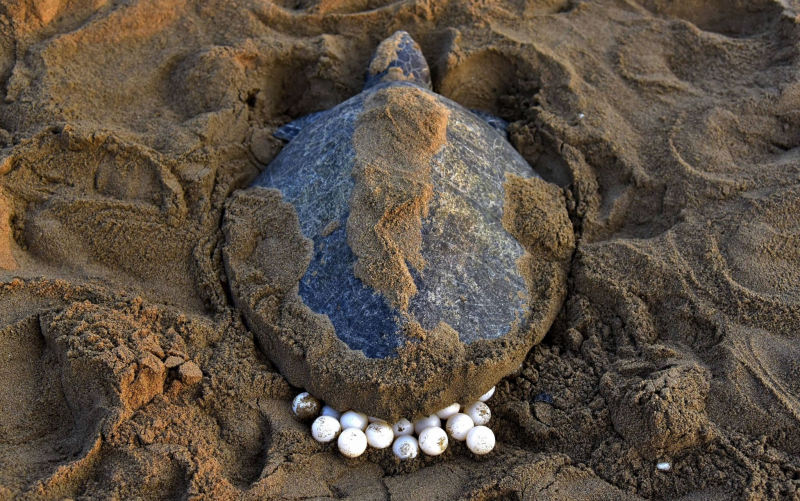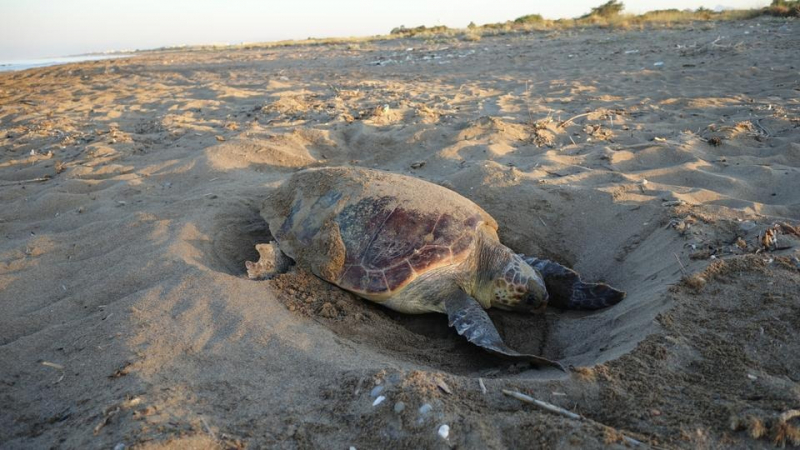Sea Turtle
To lay their eggs, sea turtles always return to the beach where they were born. Each October, for example, tens of thousands of sea turtles swarm a Costa Rican beach in an event known as the arribada, or "arrival." They lay their leathery eggs in holes in the sand. Their offspring hatch at the same time and thousands of babies race back to the ocean through a maze of predators.
During the breeding season, sea turtles mate in the open ocean. A hole dug by the sea turtle includes from 65 to 180 eggs. Over the course of several months, each nest is laid around two weeks apart. In total, two to eight clutches of eggs can be produced per breeding season. One of the more interesting facts is that the sex of the turtle is determined by the temperature of the surrounding environment. As the temperature rises, more females are born.
Sea turtle hatchlings consume a wide range of prey including things like mollusks, hydrozoans, sargassum seaweed, jellyfish, crustaceans, and fish eggs. Unfortunately, hatchlings will also eat trash and other items like tar balls when they think they are food. Baby sea turtles must suffer from a variety of predators once they leave the nest, including ghost crabs, birds, raccoons, dogs, and fish.












